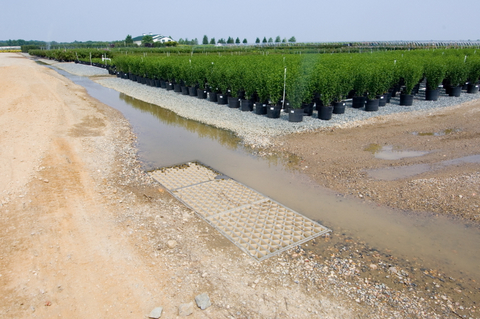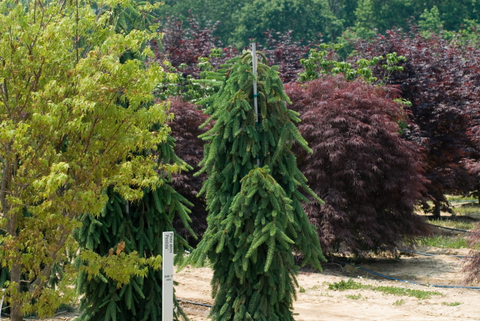You are here
Modeling Approach
 A direct sensing approach will probably work for situations where large uniform blocks of plants are grown, since the water requirement in this production scenario is very uniform and somewhat predictable.
A direct sensing approach will probably work for situations where large uniform blocks of plants are grown, since the water requirement in this production scenario is very uniform and somewhat predictable.
If we use a 'common-sense' approach, we can place a number of sensors to capture the known variability in this block, and use the average from a number of sensors to base our decision upon when to irrigate.
However, there are many instances in container and field production nurseries, where blocks contain different species, with different water requirements (due to species differences) and which are at different stages of growth.
 There is also a question of scale: many large operations cover many 100's of acres, that can be cost-prohibitive to monitor using sensors.
There is also a question of scale: many large operations cover many 100's of acres, that can be cost-prohibitive to monitor using sensors.
For this reason, we are also using modeling approaches, to be able to predict water use over large areas using a relatively small sensor networks. We use traditional “indicator plants” or “indicator species” to determine the plant(s) with the greatest water requirement in a specified area and irrigate according to these needs. Prior research has shown that using this methodology, all plants receive adequate irrigation and overall irrigation rates and associated costs are reduced compared to traditional irrigation techniques.
But by using more advanced modeling techniques, we will be able to more accurately predict when to irrigate large blocks of trees and shrubs, something which we cannot do at present. This will also help to minimizing the cost of sensor network systems.
